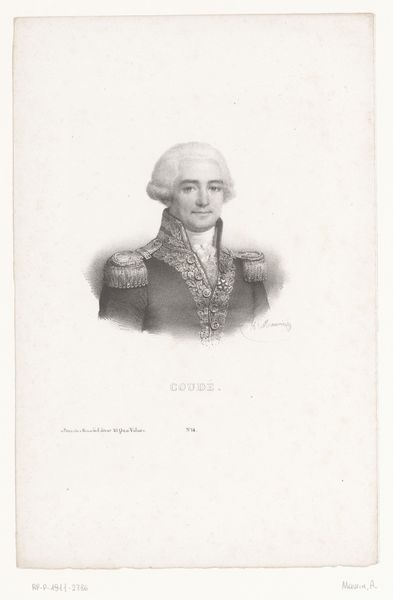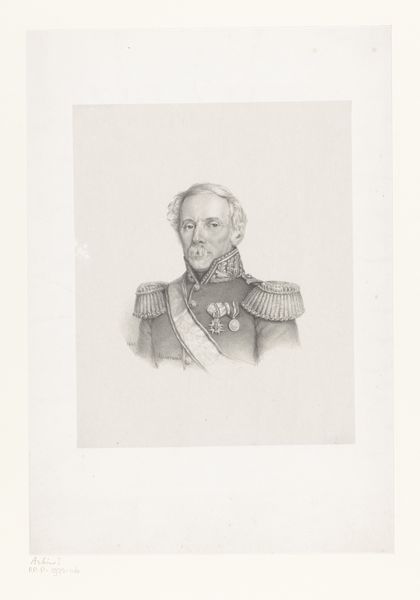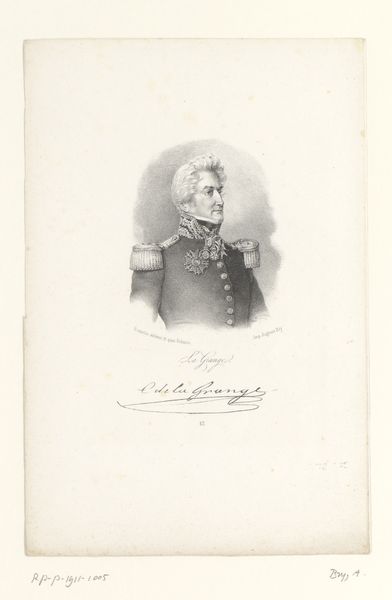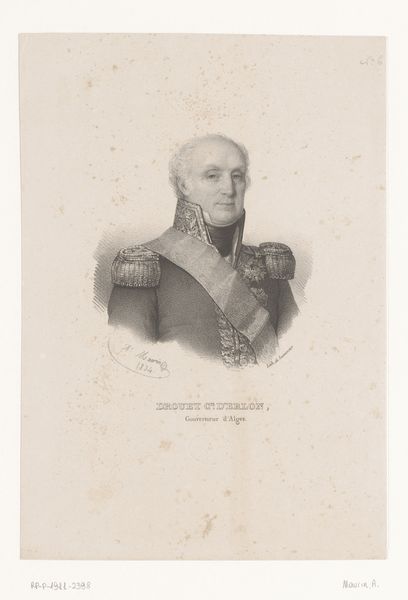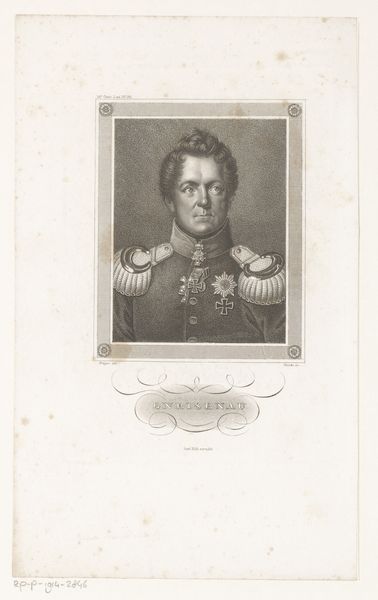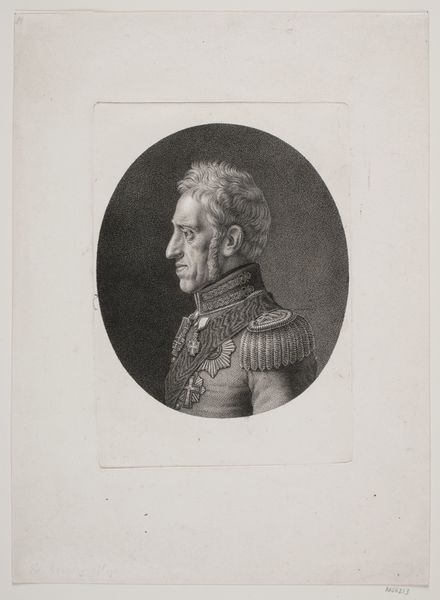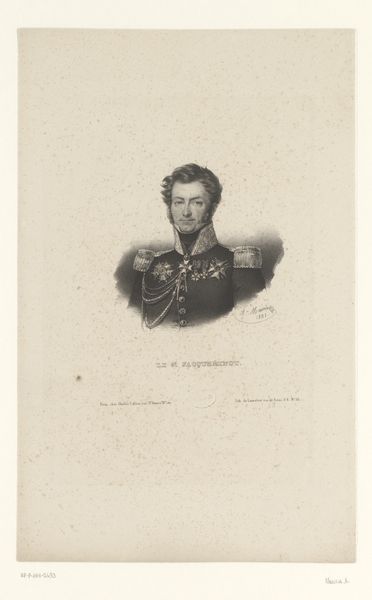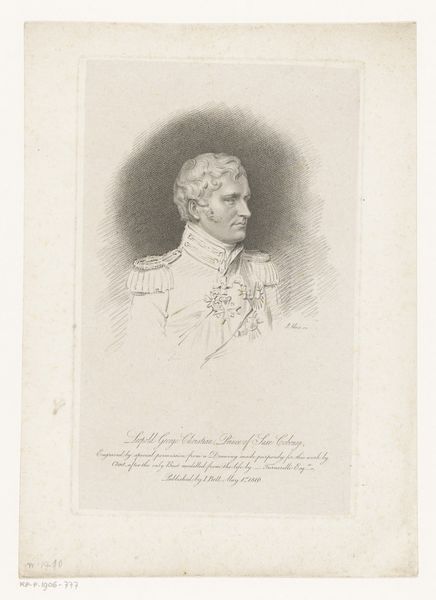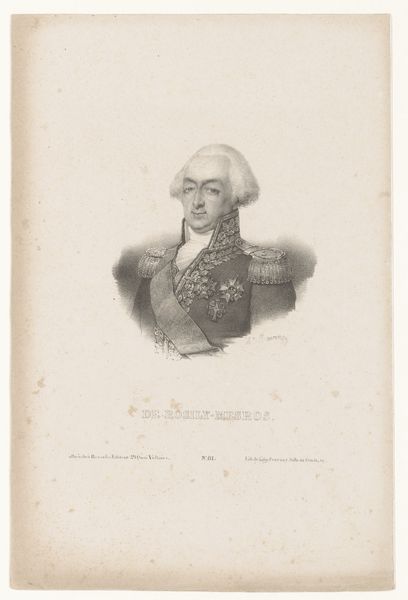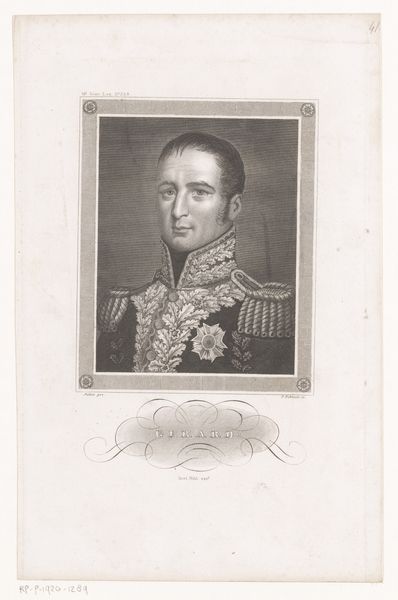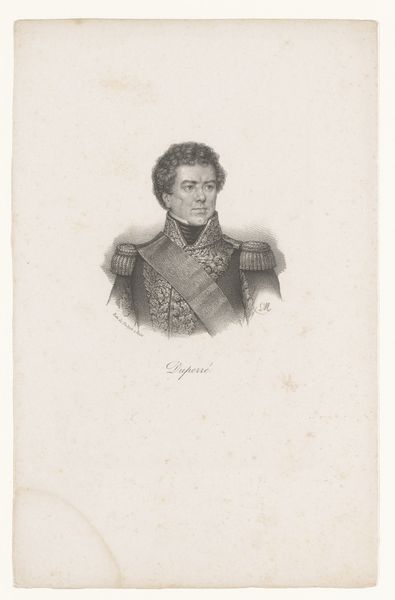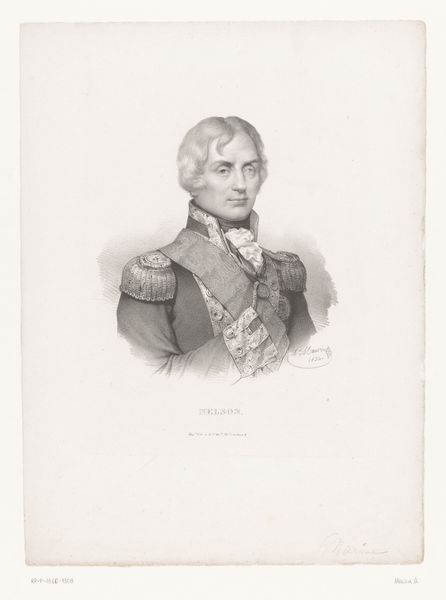
drawing, lithograph, print, pencil
#
portrait
#
drawing
#
lithograph
# print
#
pencil drawing
#
romanticism
#
pencil
#
history-painting
Dimensions: 356 mm (height) x 385 mm (width) (bladmaal)
Curator: Isn't this portrait fascinating? It’s titled "Bernhard Thortsen," made in 1832 by Wilhelm Heuer, a lithograph – so technically a print but created using drawing techniques. Editor: Intensely powerful. It's the starkness, I think. The contrast pulls you right into his eyes; a gaze so... resolute. And those shoulders! The details of the epaulettes hint at grandiosity, a subtle declaration of status. Curator: Absolutely! Heuer was working within the Romantic tradition. There’s an emphasis on the individual and the weight of personal experience – that resolve you’re picking up on definitely translates here. He’s got a little twinkle too, almost conspiratorial, wouldn’t you say? Editor: There’s certainly a studied expression. The artistic conventions of portraiture – a level gaze, regal adornments – are all there. But that slight almost smile... I find myself questioning what performative roles someone like Thortsen – as a member of the military and likely aristocracy – was tasked with playing. What realities did the performance obfuscate? Curator: Oh, I like that perspective. Considering what was going on in Europe at the time… tumultuous times following the Napoleonic Wars… perhaps there is a necessary public face, a carefully constructed persona. He wears his role almost like the heavy decoration; an armour against scrutiny, maybe? I do wander what exactly he was Chief of, what battles did he command. It’s easy to fall into the romance and lose sight of it representing actual human actions with all the ethical shades included in those, even if it doesn't literally picture it. Editor: Right! Even his dress carries political implications. Those lavish embellishments denote authority within a hierarchical social system that necessitates subjugation, and what that image says to the subjugated population about their position. We need to remember history-painting isn’t just depicting it, it also played an active role in constructing it. Curator: A needed grounding for my rather whimsical ramblings! So, thank you, let's let the man remain somewhat enigmatic in his print, but viewed now through some modern lenses too, for a hopefully clearer understanding. Editor: Agreed. It's about resisting the lure of a singular, heroic narrative, even within the seeming neutrality of portraiture and engaging instead with the complexities it elides.
Comments
No comments
Be the first to comment and join the conversation on the ultimate creative platform.
